Hon Mirin: Fermented Japanese Seasoning with Versatile Use
Aug 19,2019
Hon Mirin: Fermented Japanese Seasoning with Versatile Use
Aug 19,2019
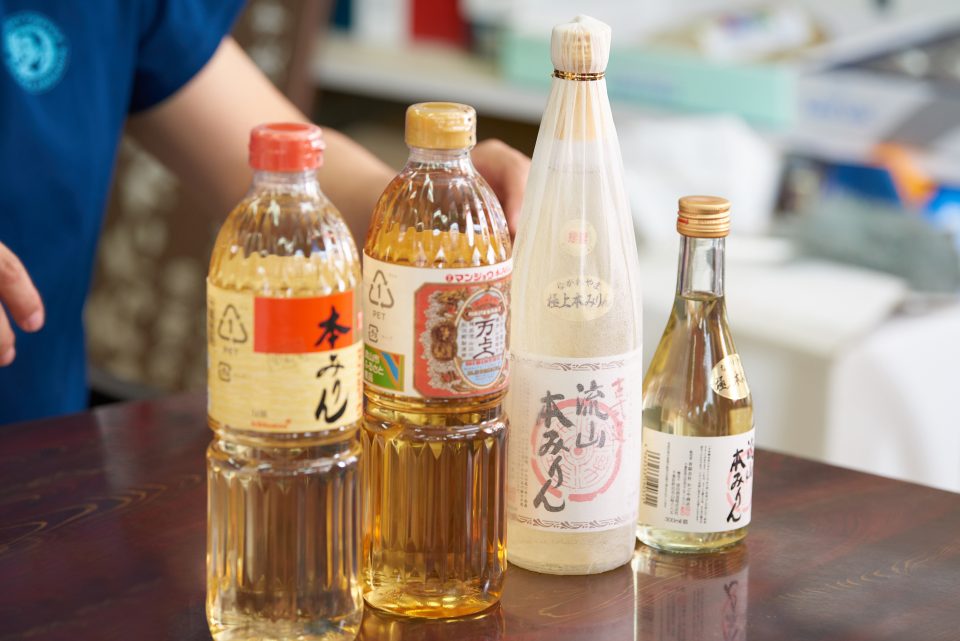

Mirin, a type of rice wine, is a ubiquitous seasoning that is found in almost every Japanese household where cooking takes place. Unfortunately, many people only think of mirin as something they use to add a glaze to simmered dishes.
Recently, some people have become aware that they can enjoy mirin as a drink, especially after a bar in a high-end Tokyo hotel began serving cocktails with a mirin base. Nevertheless, recognition that “real” mirin is actually a legitimate alcoholic beverage is still rather scarce.
Therefore, for this column we visited Kaneko Iwao, the third-generation owner of Kagoya Shoten, located in Nagareyama, Chiba, which sells Nagareyama Hon Mirin, considered the ultimate mirin. We spoke to him about the types of mirin that people think they know but actually don’t and ways to enjoy mirin other than as a seasoning.
There are several theories about the origin of mirin. One is that a sweet saké called milin was introduced from China in or around the 16th century during the Sengoku period (1467 to 1615). Another is that shochu, a distilled alcohol, was added to the sweet saké that had existed in Japan since ancient times, such as nerizaké and shirozaké, to prevent spoilage and that this eventually became hon mirin [literally, “real” mirin].
Originally consumed as an alcoholic beverage, mirin began to be used in cooking during the late Edo period (1603 to 1868). Its use, however, was limited to specific dishes such as eel sauce and soba noodle broth. It wasn’t until the 1950s that ordinary households began using mirin more broadly as a seasoning.
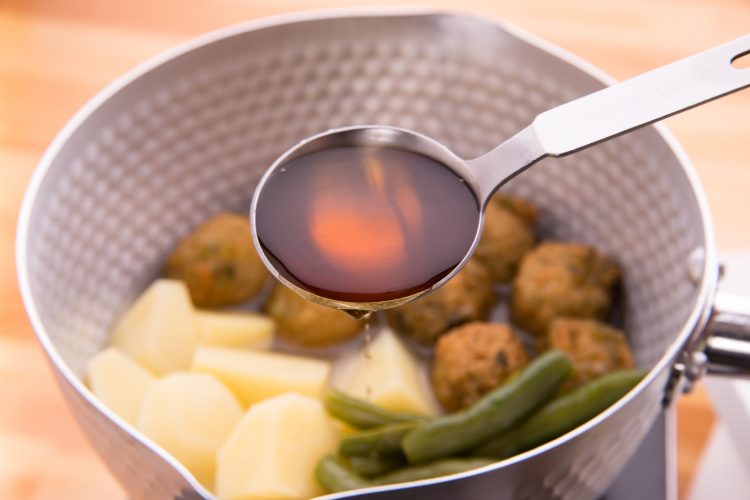
Although you can tell from the ingredient list on the packaging, did you know that there are two types of mirin used as seasonings: hon mirin and mirin-style seasoning? An explanation of how the two differ is given below.
Hon mirin — contains about 14 percent alcohol and is made from glutinous rice, rice koji [malt], and shochu or alcohol
Mirin-style seasoning — contains less than one percent alcohol and is made by blending sugar, such as refined sugar or dextrose, with rice, rice koji, and umami flavorings
It should be noted that some varieties of hon mirin contain sugar while others do not. In fact, any mirin made from glutinous rice, rice koji, and shochu (or alcohol) can be called hon mirin, regardless of whether it contains sugar or not.
But when should we use hon mirin and when should we use mirin-style seasoning?
“The advantage of mirin-style seasoning is that it has less than one percent alcohol, so you can use it as is in dishes that are not heated. It is also inexpensive compared to hon mirin, which may make it more accessible.
“Conversely, if you use hon mirin in dishes that are not heated, you first have to boil it slightly to reduce the alcohol content [a process called nikiri]. Despite this extra step, hon mirin offers a more refined sweetness, and the workings of its alcohol and amino acids make it easier for flavors to penetrate ingredients. Hon mirin also prevents ingredients from falling apart during cooking and enhances the food’s richness and umami. Because of these advantages, I recommend choosing hon mirin made from glutinous rice, rice koji, and shochu (or alcohol) whenever possible.”

Kaneko Iwao, owner of Kagoya Shoten
Nagareyama Hon Mirin, produced by Kubota Shuzo, a brewery in Noda, Chiba, with a history of 147 years, and sold at Kagoya Shoten, is, as its name suggests, 100% hon mirin. From the ingredients to the manufacturing process, Kubota Shuzo adheres to traditional methods.
“The main ingredients of Nagareyama Hon Mirin are domestic glutinous rice and rice koji made from domestic rice. The shochu used to ferment these is also made with domestic rice. It’s not uncommon nowadays to find mirin made with overseas glutinous rice or without any glutinous rice at all. Which makes this mirin even more distinctive for being made from 100 percent domestic ingredients.
“The mirin is also pressed with a traditional method that traces back to the Edo period. It involves putting the mirin moromi [mash] in a cloth bag and placing a heavy stone on top of the bag, which slowly presses out the mirin.”
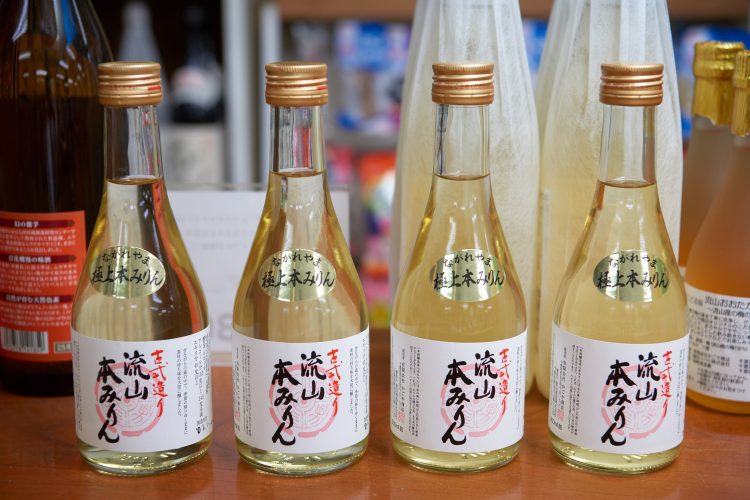
Does this traditional pressing method affect the inherent sweetness of the mirin?
“Mirin’s sweetness is created when the starch in the glutinous rice is converted into sugar by the action of the koji mold during fermentation. Nagareyama Hon Mirin is aged slowly for about three months, which brings out its sweetness as well as a richness and depth of flavor.”
The traditional production method is time-consuming and labor-intensive, so there are only a few breweries in Japan that brew mirin in the traditional way. In the Kanto region, there are only two: Kubota Shuzo (in Noda, Chiba), which makes Nagareyama Hon Mirin, and Baba Honten Shuzo (in Katori, Chiba), which produces Saijo Shiro Mirin.
While hon mirin is excellent as a seasoning, there are many other ways to savor it.
“You can enjoy drinking it straight as a chilled drink, but my personal recommendation is mirin mixed with soy milk. Mix one part mirin to three parts soy milk to get a delicious smooth, creamy flavor similar to Kahlua milk.”
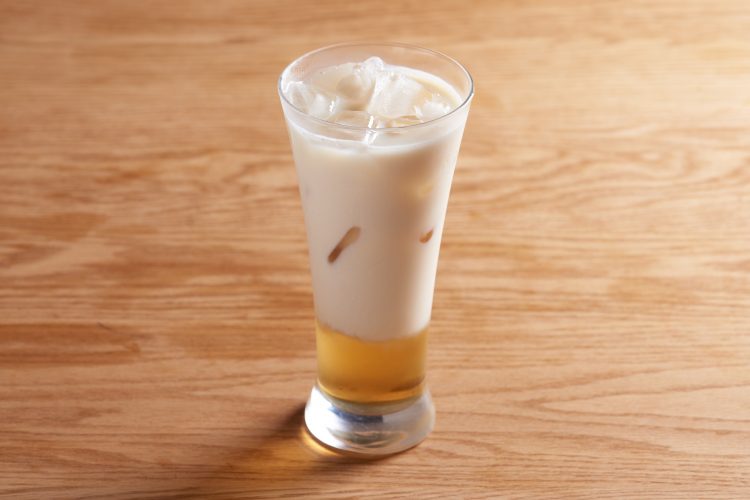
Mirin mixed with soy milk
“If you prefer a slightly lighter taste, you can mix mirin with lemon juice and soda water, or try it with ginger ale and lime juice for a Moscow Mule-style drink, or even mix it with grapefruit juice for a Salty Dog-style drink. These are all great ways to have mirin as a cocktail.”

Mirin sour
Adding about a teaspoon of mirin to coffee or tea (preferably one with a mild aroma like Ceylon tea) smooths out the taste, and adding a small amount to a bowl of miso soup enhances its richness.
Kaneko mentions another surprising use of mirin.
“People should definitely try mirin syrup, made by reducing mirin. It can be used as a substitute for honey on bread or pancakes, or drizzled over vanilla ice cream. The syrup can be either runny or thick depending on how much you reduce the mirin. So it’s possible to adjust the syrup to your preferences or its intended use.”
When enjoying mirin as a drink in particular, using 100% hon mirin gives a more pronounced taste than hon mirin with added sugar.
Mirin produced with traditional methods creates a by-product called kobore ume.

Kobore ume from Nagareyama Hon Mirin is sweet and moist and has a crumbly texture much like okara [tofu pulp]
“After pressing saké, you are left with saké lees, right? The same thing happens with mirin. After pressing it, you end up with kobore ume. The name, which literally means ‘scattered plum blossoms’, apparently comes from shape of the pressed lees, which resemble a profusion of blooming plum blossoms.
“It has a slight sweetness to it, so you can eat it as is. Or you can use kobore ume to make amazake or sweets. It gives them a natural sweet flavor.”
*See here for recipes that use kobore ume.
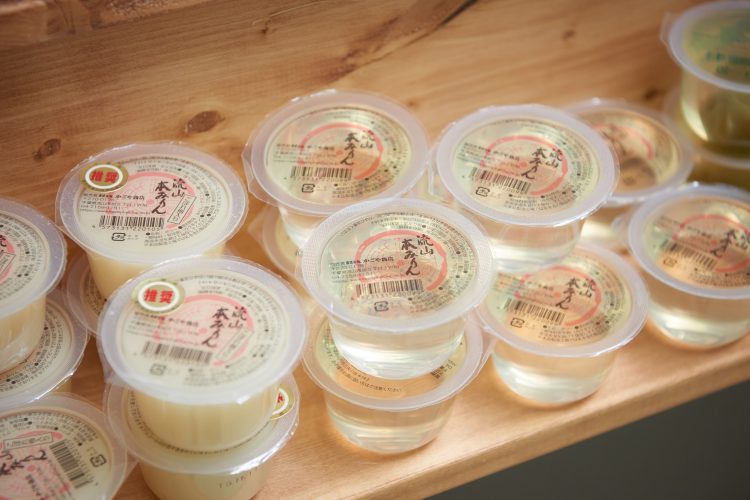
Kagoya Shoten also sells sweets made using Nagareyama Hon Mirin. Pictured here is a selection of jellies (some of which contain kobore ume).
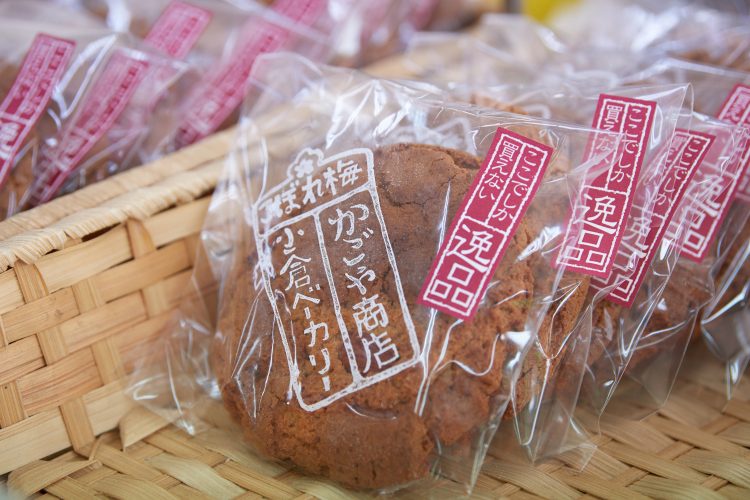
Cookies made by Ogura Bakery, a well-known bakery in Nagareyama, that use kobore ume from Nagareyama Hon Mirin. The cookies have a moist texture and a simple, rustic flavor.
It is possible to substitute for mirin with saké and sugar, so more households nowadays do not use mirin. However, Kaneko insists that “mirin is as versatile a seasoning as soy sauce, if not more so.”
“Some customers who love using Nagareyama Hon Mirin always have reduced mirin on their dinner tables and add it to everything, from natto [fermented soybeans] and miso soup to salads. It’s that versatile, and it brings out a depth of flavor that can’t be achieved by substituting saké and sugar.”

It is truly surprising just how many uses mirin has. Beyond using it in cooking, mirin seems to be becoming a more familiar presence than ever, even showing up in sweets and in alcoholic drinks.
The key is to select a hon mirin that is close to 100 percent domestic as possible. When shopping for mirin, be sure to check the ingredients list and choose a bottle that is made from glutinous rice, rice koji, and shochu.
Mirin will surely elevate your daily meals.
